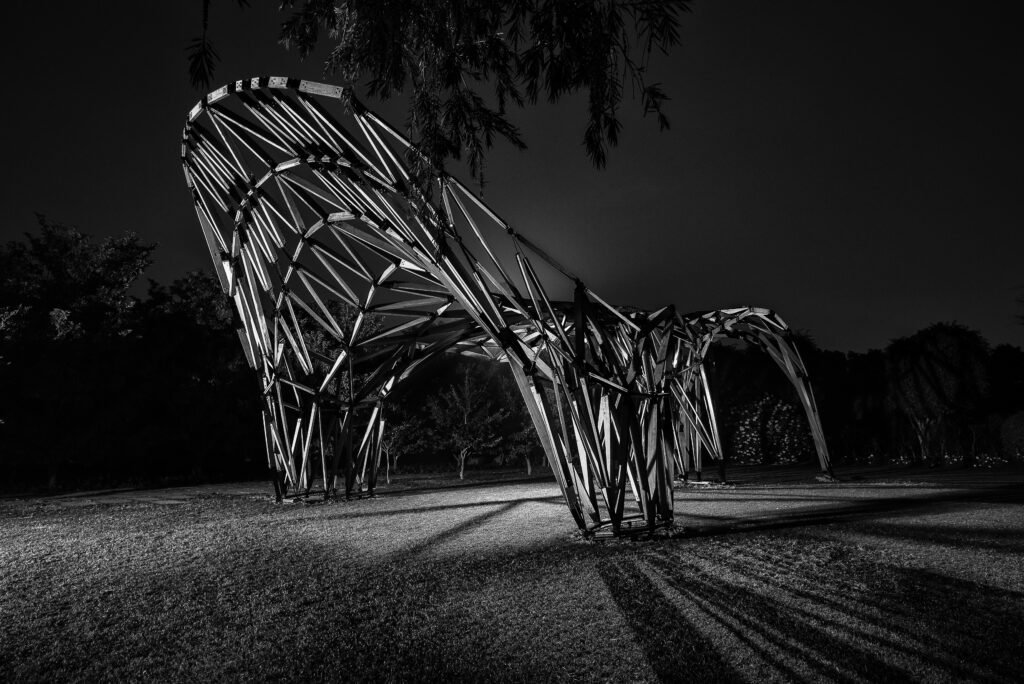
plaisiophy / professional / orproject / 2017
computational design, assembly logic, on-site fabrication
Plaisiophy is an outdoor pavilion designed for an Indian Wedding. The form of the structure was derived from a network of overlaying grids, which resulted in a faceted mesh. The vertices of the mesh were resolved as steel 'nodes' and the edges as wooden 'beams'. This resulted in 309 unique nodes with 3 to 8 connections per node. Due to the availability and versatility of sheet materials, steel sheets were used to manufacture the nodes. The parts were assembled by a team of skilled and semi skilled metal workers. To suit this, they were sized and detailed to ease manual assembly. This helped achieve a high level of precision, despite the low tech fabrication approach.
with Rajat Sodhi, Christoph Klemmt, Balaji Mohan Rajkumar
All photographs : Shovan Gandhi and Orproject

For each vertex of the tessellated mesh form, the nodes had unique pitch, yaw and roll angles. To resolve these using sheet material and to also avoid intersections between adjacent flanges, an optimization algorithm was used which generated the best configuration for each node. To manufacture this, approximately 18,000 parts were plasma cut on 4mm thick steel sheets, which were then welded together to form the 309 unique nodes.
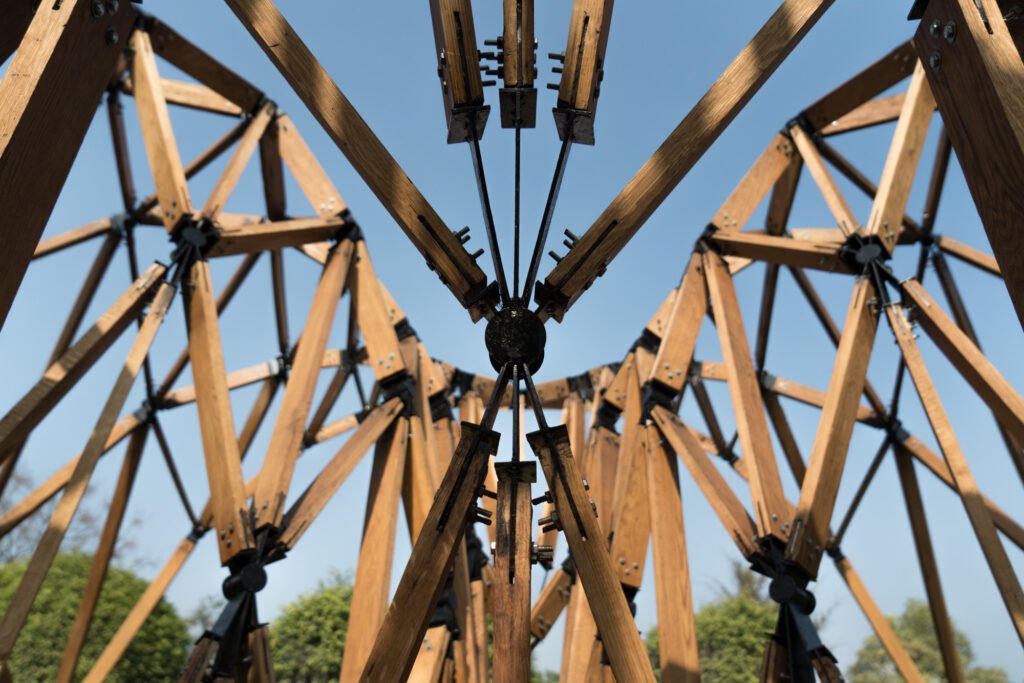
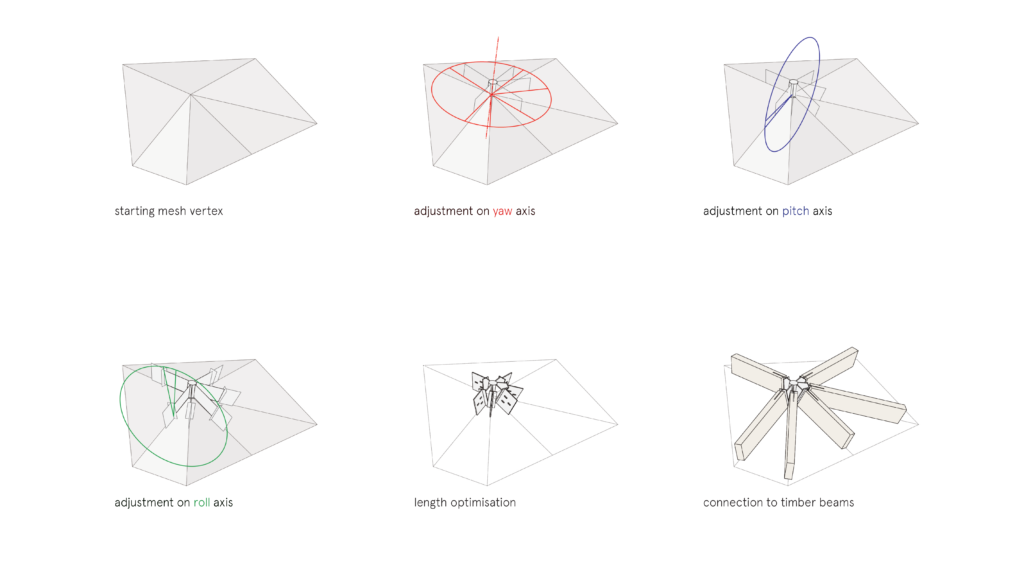
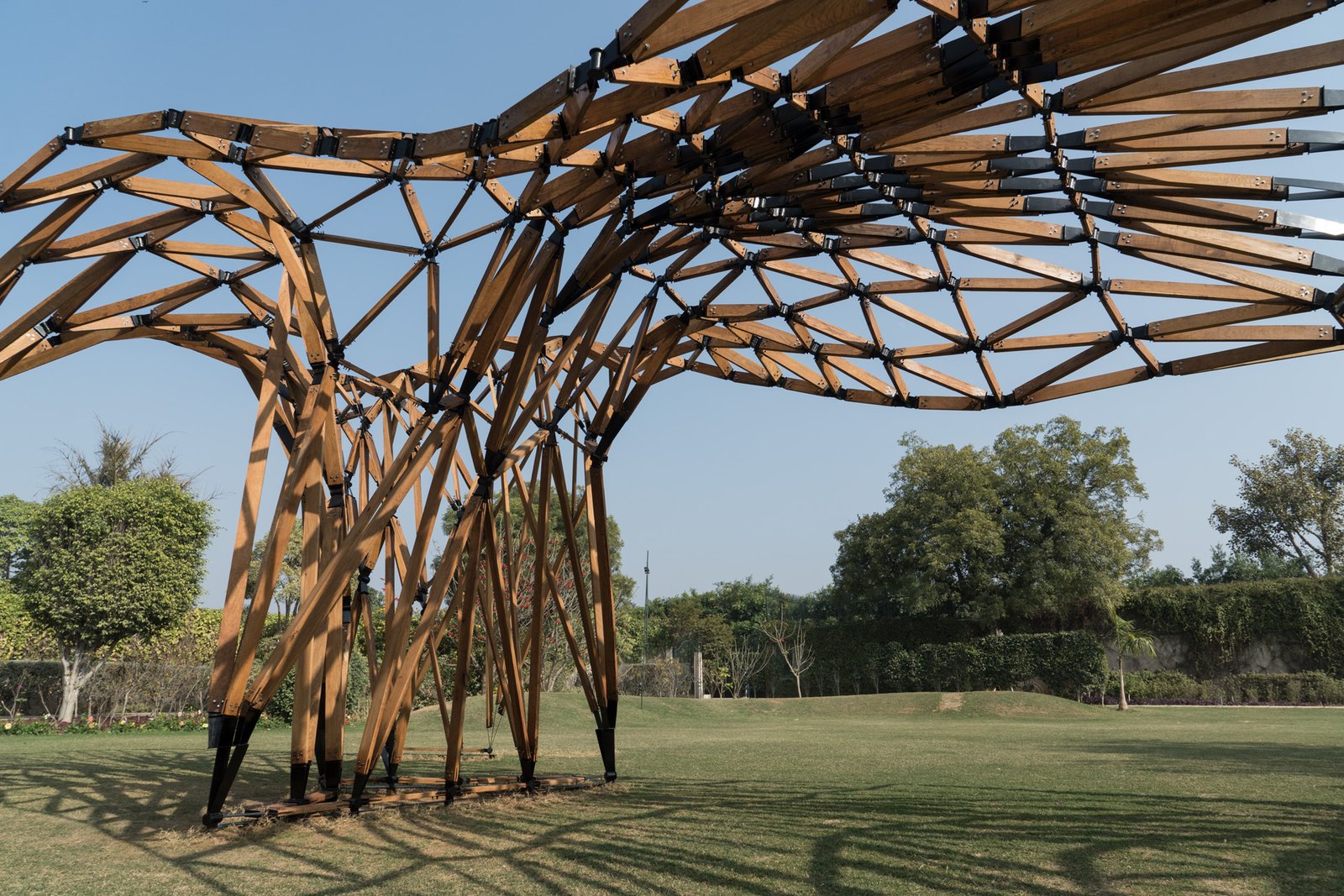
While the local climate does not require a shielding from the elements during the wedding season, the main
aim of the pavilion is to define different spaces and create a dynamic interplay of light and shade.
During fabrication, sub assemblies of nodes and beams were made on ground in sizes that could be lifted by a
team of two workers and a construction sequence was developed to assemble the pavilion without using
excessive formwork. With this logic, a team of 6 unskilled workers were able to quickly pick up the skills
required to assemble the structure and complete it over a period of two weeks.
Despite the complexity of the system, the simplified construction logic proved to work well for the
low-tech, high-labor context of the Indian construction sector.
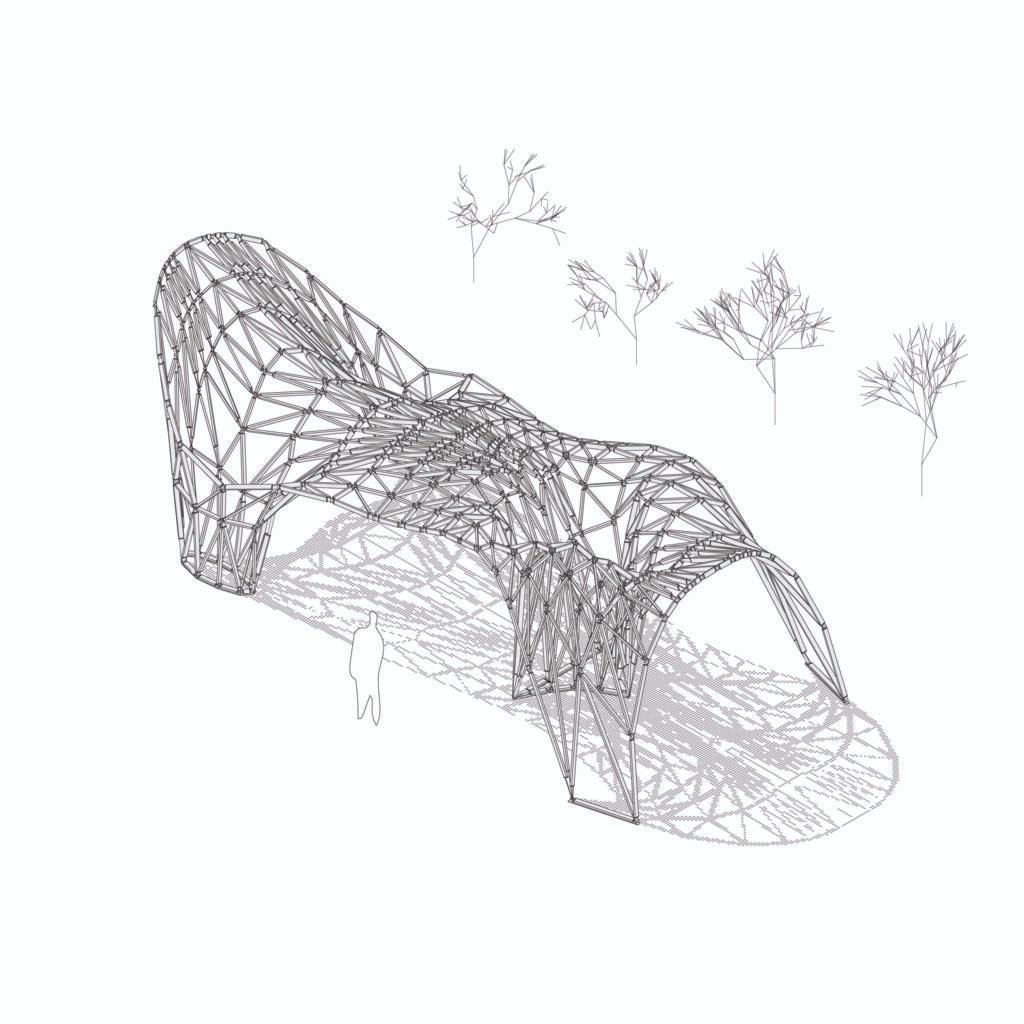
All rights reserved, ananya kango 2023